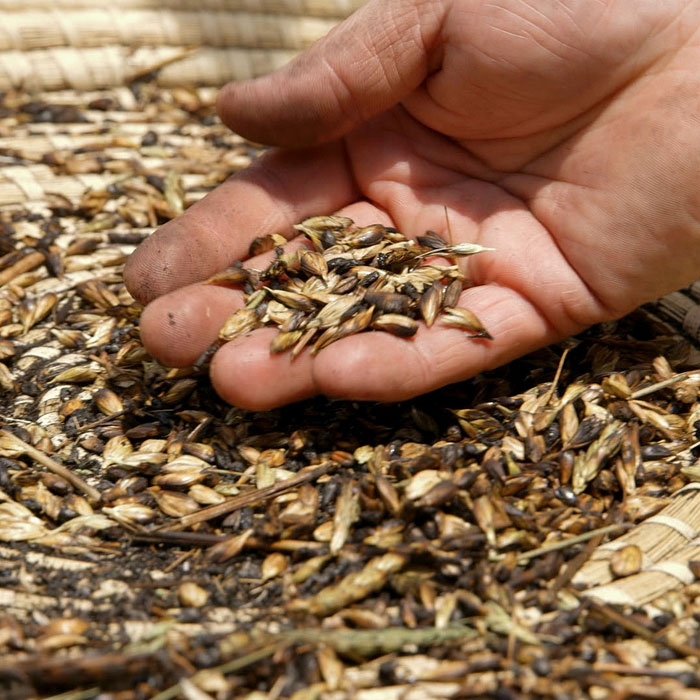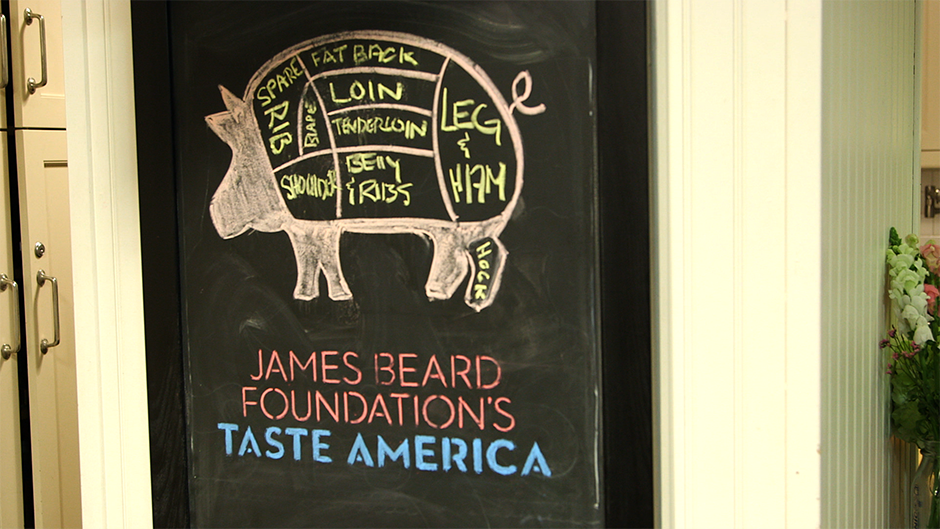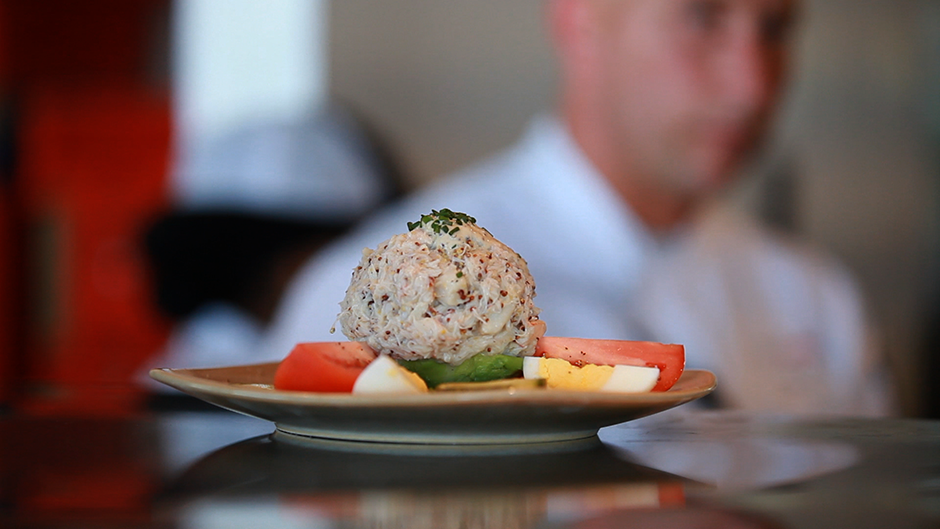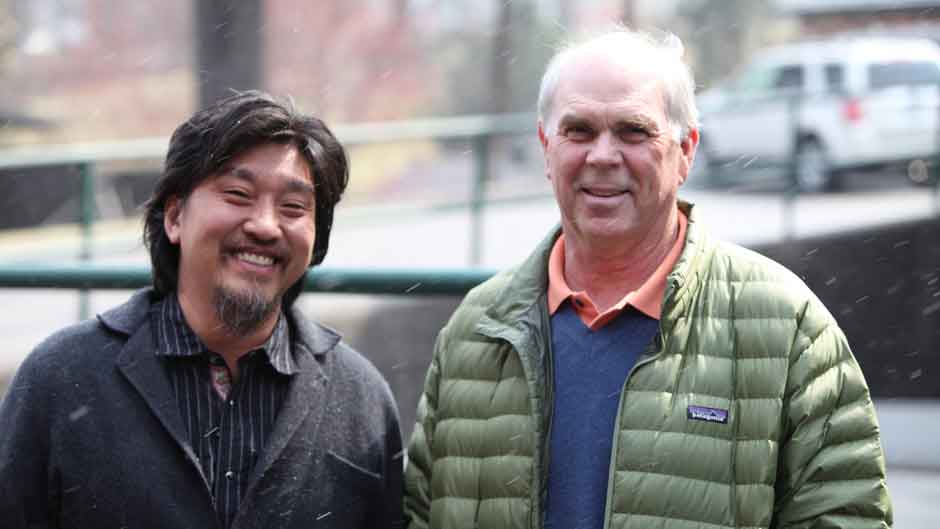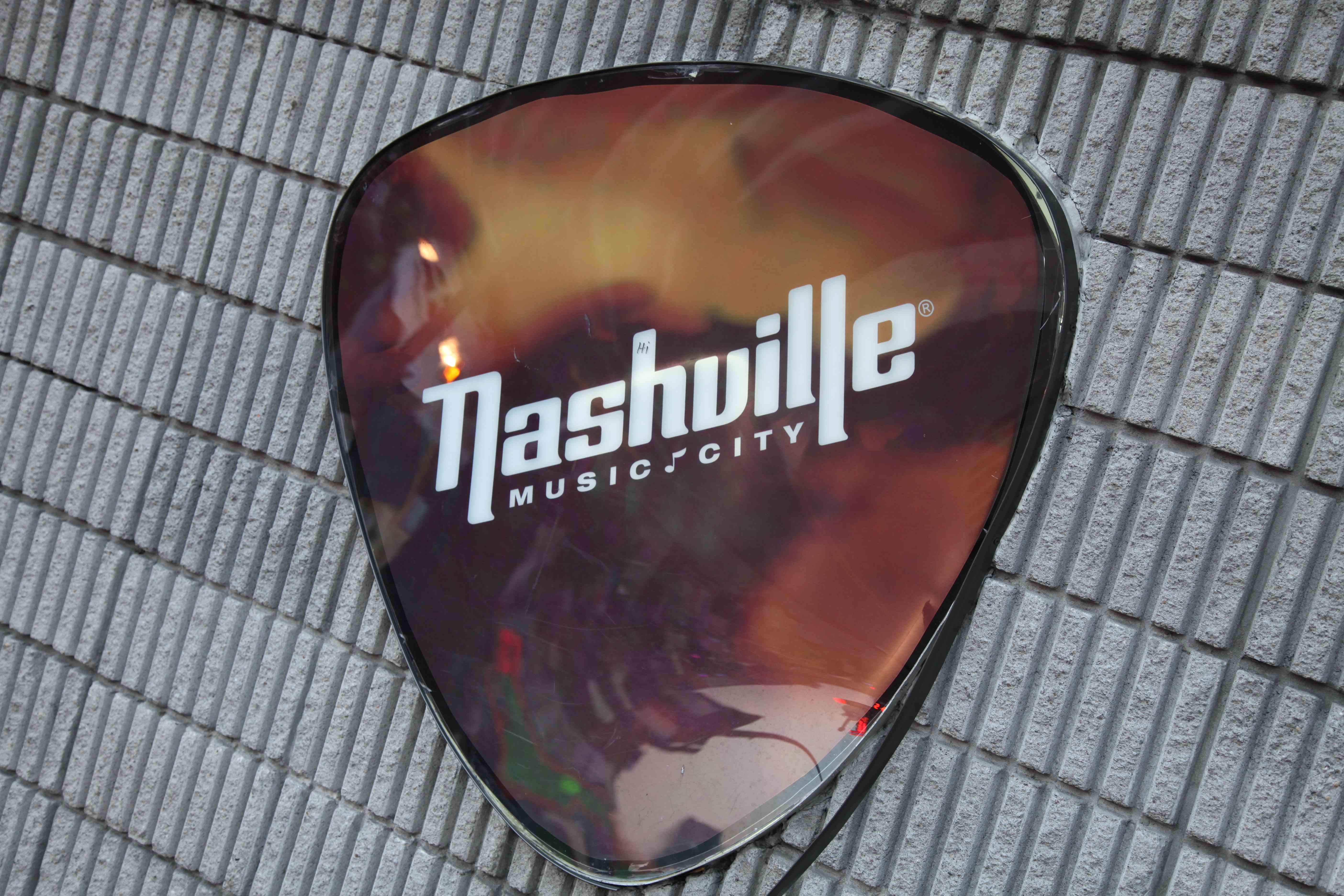AUTHOR: Brittany Brothers, The Mind of a Chef
EPISODE: SEEDS
CHEF: SEAN BROCK
Growing up in Charleston, I was admittedly prejudiced toward Columbia. The “Concrete Capital,” we called it.
Little did I know that such sprawling beauty existed just outside of the city — rich with history worth preserving. That’s where Glenn Roberts of Anson Mills Farms steps in. Both he and Sean Brock work tirelessly to preserve heirloom grains and corn — like farro and Jimmy Red corn, respectively. Sean and the McCrady’s team don’t quite have the milling set up that Anson Mills does, so they improvised with a little liquid nitrogen and a household blender. The results are quite pleasing…
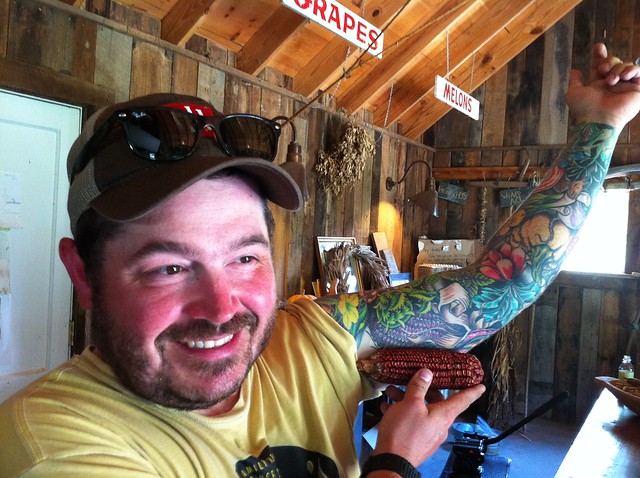
Sean Brock shows off the inspiration for his Jimmy Red corn tattoo. Sean decided to become a “seed saver” a few years ago to protect this particular strain of corn from extinction.
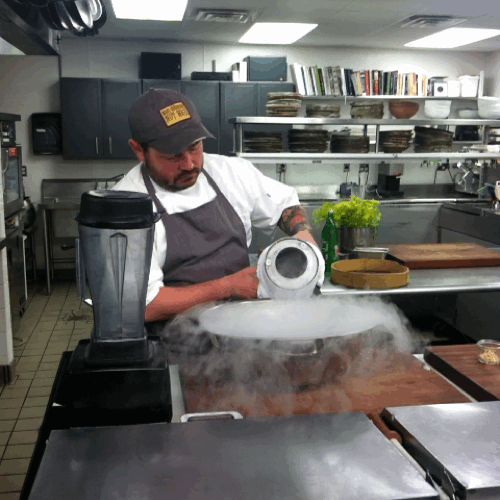
At McCrady’s, Jimmy Red corn is used to make grits. There, they take it from whole kernels down to the finished product. Here, and in the following 4 photos, Sean demonstrates the process of cold milling — where liquid nitrogen is used to preserve the flavor of the corn in the milling (or in this case blending) process, making quite the magical setting. The finer cornmeal is then sifted out from the larger grains.
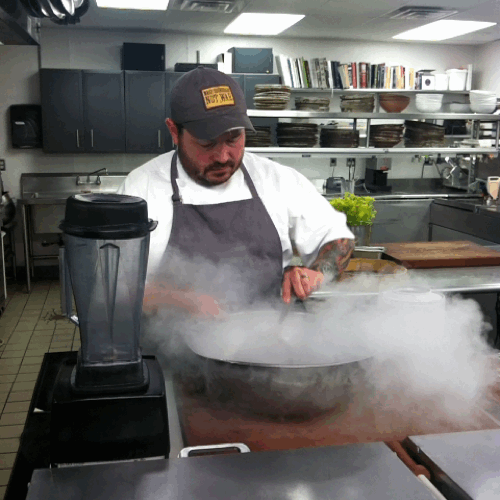
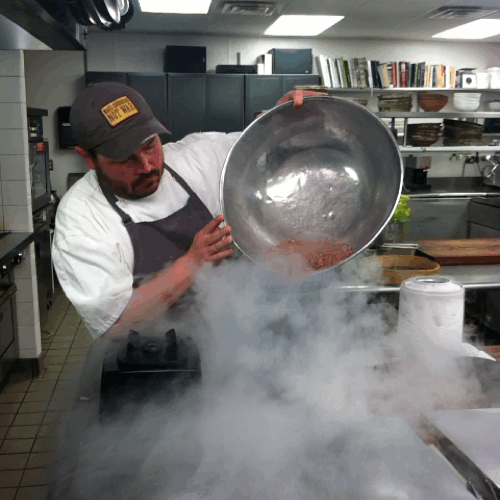

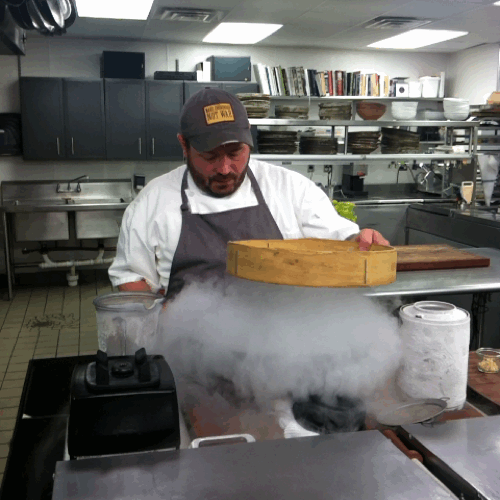

Liquid nitrogen is used for more than just cold milling in the McCrady’s kitchen. After a particularly late night, Sean and the crew indulge in the “Hangover Hanky” — which Sean claims will cure just about any hangover. “I need to take this to Bonnaroo,” he jokes. I think he’s on to something there…
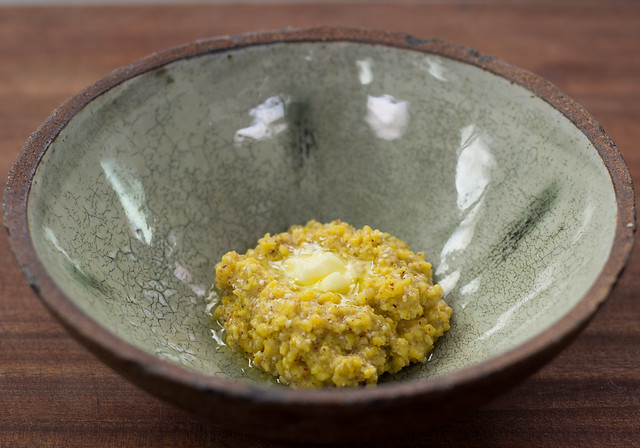
Three parts water, one part grits, 45 minutes and a dollop of butter later … and you’ve got yourself a hearty bowl of Jimmy Red grits. Simple Southern cooking at its finest.
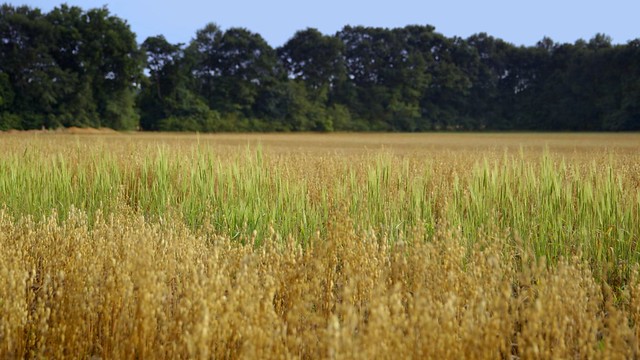
Situated behind a sleepy little farm off a meandering dirt road just outside of Columbia are 8 acres of precious farro fields owned by Anson Mills and tended by Master Seedsman, Ben Dubord.

The beauty of farro is that it’s pure, untouched. It hasn’t gone through the various modifications that wheat has gone through. Here, Sean and Glenn Roberts of Anson Mills get ready to harvest farro the old-school way — with a sickle.
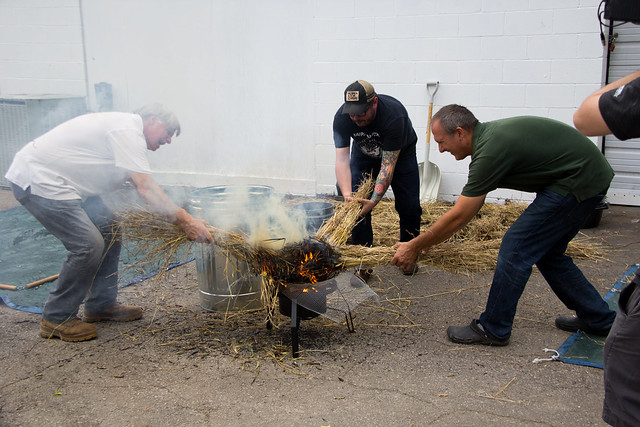
The next step in the traditional process of harvesting farro verde is called fire threshing, which makes the farro easier to hull and gives it a nice smoky flavor. As you can see, the process is a little ‘primitive’, so we made sure to take several large steps back…
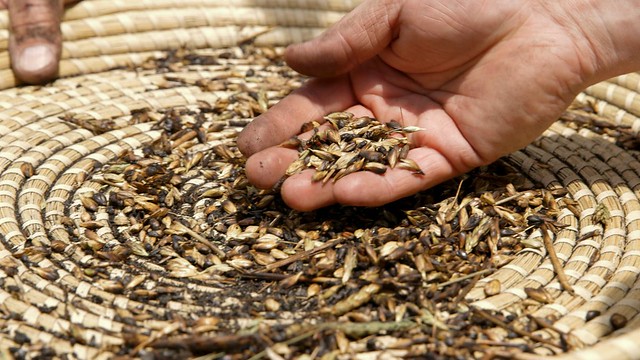
The final result of all that hard labor. You’re left with a whole new sense of respect for each individual harvested grain. On the set, Sean half-joked that if any of his chefs overcooked a farro or rice dish, he’d force them to go out back and call Glenn to explain to him what they’d done to his life’s work and beg for his forgiveness. We dined at McCrady’s on our last night in town, and you’d better believe that I finished every single grain of that farro!
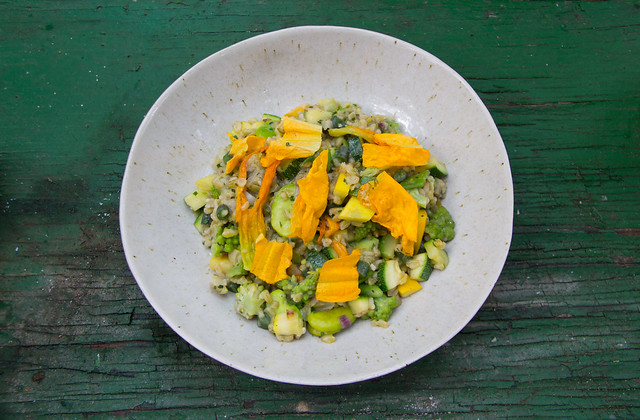
Farro Verde Succotash. We filmed this cooking scene outside in a little alcove of live oaks wrapped in green ivy, and it just felt so right cooking such a vegetal dish in such verdant surroundings.
Photography by Zero Point Zero, from The Mind of a Chef.

